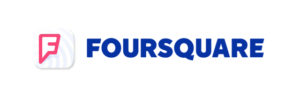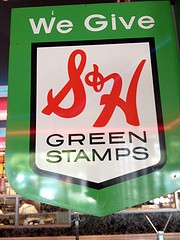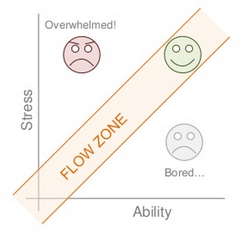From Mobile to Crowd-Sourcing through Gamification and Context Aware Application: what IT can and should reuse of social networks experiences
In the last years rivers of (digital) inks have been flown talking about social networks, the new Digital Generation and Digital Natives, BYOD (topic perfectly discussed in a previous ICT journal dossier) and about the increased pressure over IT department but how many of us have really looked into the founding Ideas and dug the technologies and innovation behind such services?
Maybe as a car manufacturer can leverage, industrialize and foster innovation leveraging technologies and experiences coming from Formula 1 racing teams, we can do the same analyzing a winning social player in order to have some insights that we can bring back into our business systems world.
Finding a right player is not so hard since there are so many around, from Facebook to Twitter, from Spotify to Flickr. For many reasons FourSquare is very interesting and complete and it can be taken as good candidate for the winning player profile.
Just to provide a quick recap, essentially FourSquare (www.foursquare.com) is a mobile application that allow users to check in to a place and share that information with friends with the aim of illuminates, informs and inspires and inviting to experiment, sharing and establishing conversations among the community of users. Basically during daily usage, we can check-in into a City and, hereafter the system will inform us of “friends” around, we can search for restaurants, interesting places and even looking to hints and suggestion provided by other users. As far as we check-in adding hints and suggestions to the system, we are remunerated with “Badges” like Newbie, Adventurer, Explorer, … proving our credibility among the community of users.
It is important pointing-out that for the aim of this analysis business model, profitability or sustainability is not relevant. FourSquare was chosen for the innovation paradigm it brought with and technical features and ideas that can be easily reused in daily and real life activities that made them getting the momentum of brining millions of (enthusiastic) users onboard.
Looking at such functionalities from a very high-level, the most compelling ones from a business stand-point are the capability of combining the social, mobile and location features (officially known as So.Lo.Mo.), the Badging (also known as gamification) and the auto generated content (also known as crowd sourcing). Let’s take a deeper look to each one.
SoLoMo In addition to being in the Top #10 of the most irritating marketing buzzword, as said means Social, Location and Mobile. Despite the fact that social media, local targeting, or mobile communications are not brand new concept but when you put all three together it’s a combination that’s revolutionizing digital marketing. For the first time, a system can target and communicate with a target audience in new ways because technology has caught up with the way people behave when they’re ready to make buying decisions that in the case of foursquare can be restaurant, pub, hotels, shops.
But what is the technical lesson learned here? A So.Lo.Mo. application is nothing else that a subset of a wider classification which is Context Aware Application where the idea is that application behavior depends from the user context at the time the application is used.
Let’s imagine for instance a solution for managing the maintenance of fixed appliances (BTS, Distributor Machines, Pipes, Power Supply, etc.), with a Context Aware approach the application would take an active role automatically spotting the equipment that should be maintained on the road, proactively suggesting the interventions needed accordingly to past history and bringing similar cases fitting the local situation once described by the operator inferencing the past history. As it may look strange but indeed this is how FourSquare behave within its specific domain.
Context Aware Application is really a strong paradigm and it must be paid attention to not limit its meaning only to Mobile applications.
- Intranet Portal can adapt their behavior accordingly to the device used rather than organizational role at first chance. During time content can be further adapted accordingly to user behavior using the Intranet.
- A front-end banking application can suggest or change functionality accordingly to the historical profile of the customer in front of the operator;
- How many Reports are available in a corporate Data-Warehouse? Which are the most useful reports fitting our role and department? Which filters and slices are the most relevant? Won’t be nice having a proactive system suggesting us what we should do?
Daniel Pink’s idea is that high skilled people are limitedly motivated by money and more by Autonomy, Mastery and Purpose of their duties. Gamification is an excellent tool to measure the Mastery and, at the same time, fostering the attitude of high-skilled workers of being recognizable and rewarded in the communities. Yes, there is even a bit of egocentrism in this but pragmatically it’s better to face the reality otherwise how I would explain the reasons why I’m struggling in writing this article?
But how can we bring Gamification can in daily business? It’s not too difficult and there are plenty of examples. Establishing collective intelligence processes inside the organization and rewarding the most active users it the most viable way. Think to the successful experience of www.stackoverflow.com and decline it inside an organization. Such ideas can be easily extended to cover “classic” IT assets such as CRM, Help-Desk or Knowledge Portals. We are rapidly moving in the era of Social CRM and badging could be used to recognize and maybe reward the top Sales Agent. An interesting example is represented by www.badgeville.com that can be used to add badging capabilities on top of SalesForce. Why not, if we run an IT Department we can gamify our Software Factory granting badges to the most reliable developers (e.g. less bug and less broken builds) and even on top our ITIL processes (who are the fastest in closing incident tickets?).
About Crowd-Sourcing the most known example is Wikipedia where the disruptive innovation has been engaging a huge community of people in working together and concurrently to generate the content of an initially empty system. The idea of Crowd Sourcing hence is about obtaining the needed services, ideas, or content by soliciting contributions from a large group of people and especially from the online community rather than from traditional employees or suppliers. In the case of FourSquare the database of venues initially was rough and dry and the duty of populating and enriching was directly assigned to the user crowd. Obviously co-authoring processes such as those ones, in order to be succesfully must be self-regulated therefore internal procedures will ensure the quality and consistency of gathered content maybe leveraging additional quality oriented crowd-sourcing processes.
The Crowd-Sourcing and Collective Intelligence topic are wide topics and bringing them back to the business world there are plenty of successful stories such Best-Buy in B2B pricing process rather the very well known ideation processes crowd-sourced by Ben & Jerry, Starbuck, etc.
It is crucial realizing that Crowd-Sourcing processes can be inbound, therefore acting inside the company limits leveraging to Management 3.0 theories and using IT technologies to unleash what is known as company collective intelligence. Outbound Crown-Sourcing means establishing processes involving the customer bases in defining the company strategy, for instance gathering feedback about new product features, and transforming the Crowd-Sourcing itself into a huge marketing opportunity maybe prizing the most voted features.
How can we leverage such findings in a non-conventional way? Moving back to the previously discussed example regarding fixed appliance maintenance, imagine to open the application aim to customers or external users into a B2C way allowing them to report about issues or malfunctioning directly from the field maybe enforcing their commitment through gamification. Of course it cannot work for all the business domains but for the most retail oriented ones for sure yes!
myTeamWorks were Silver Exhibitors at ESPC 2013. For more SharePoint content check out our resource centre!
Stay tuned for more SharePoint content by joining our community or by following us on twitter or facebook.











